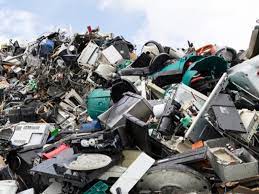Electronic waste, also known as e-waste, is a growing problem around the world. E-waste refers to electronic products that are no longer usable, including computers, televisions, mobile phones, and other electronic devices. These products contain valuable and potentially hazardous materials, which can harm the environment and human health if not disposed of properly.
The Growing Problem of E-waste
The rapid pace of technological innovation has led to the increasing production and consumption of electronic devices. As a result, e-waste is one of the fastest-growing waste streams in the world. According to the United Nations, the world produces approximately 50 million metric tons of e-waste every year, and this number is expected to increase.
Environmental and Health Hazards
E-waste contains a range of toxic substances, including lead, mercury, cadmium, and brominated flame retardants, which can leach into the soil and water and contaminate the environment. These substances are harmful to human health and can cause a range of health problems, including cancer, birth defects, and neurological damage.
The Importance of Responsible E-waste Disposal
Proper disposal of e-waste is essential to prevent environmental and health hazards. Governments around the world have implemented regulations and laws to ensure that e-waste is disposed of responsibly. This includes the implementation of e-waste recycling programs, which aim to recover valuable materials from electronic devices and reduce the amount of waste that ends up in landfills.
The Role of Consumers
Consumers also play a vital role in the responsible disposal of e-waste. They can reduce the amount of e-waste generated by purchasing products with longer lifespans, repairing devices instead of replacing them, and donating or reselling old electronics instead of throwing them away.
Conclusion
E-waste is a growing problem that poses significant environmental and health risks. The responsible disposal of e-waste is essential to prevent these hazards and ensure a sustainable future. Governments, manufacturers, and consumers all have a role to play in reducing the amount of e-waste generated and ensuring that it is disposed of properly.




